Exploring the sci-fi sleeper hit that transformed Arnold Schwarzenegger into a global megastar
Arnold Schwarzenegger’s rise to global superstardom was nothing short of phenomenal. Not only did he break down Hollywood barriers, overcoming the Teutonic accent and unpronounceable name concerns of various industry naysayers, the foreign outsider and future governor of California was embraced by Americans as one of their own. In fact, the man who would become known simply as ‘Arnie’ was the total embodiment of Reagan’s free market global model, his larger than life physique and American Dream philosophies the perfect totem for the self-improvement obsessed 80s. In an era of ‘Greed is Good’, Arnie’s humble rise to power, from skinny Austrian boy of communist heritage to capitalist megastar, was a universal acknowledgment of American exceptionalism at a time of ideological Cold War tensions.
Arnie first rose to prominence in George Butler and Robert Fiore’s 1977 documentary Pumping Iron, which followed the prodigious bodybuilder and several other young hopefuls on their journey to the 1975 IFBB Mr. Universe and 1975 Mr. Olympia competitions. The film mainly focused on the growing rivalry between Schwarzenegger and future Incredible Hulk Lou Ferrigno, giving us a first-hand look at the star’s unyielding desire to succeed. On the surface, Schwarzenegger was little more than a machine, a muscle fetishist who had terminated the competition 5 years running to claim the prize of Mr Olympia. He was also cocksure and strangely endearing, displaying a sense of wit that belied his thick Eastern drawl. Less than a decade later, screenwriters were queuing up to pen the kind of money-spinning one-liners that tapped into Arnie’s inimitable personality, but the transition from champion weightlifter to credible actor would not come easy.
Mr. Universe had opened the acting doors as early as 1969, though ‘acting’ may be overselling it a little. Schwarzenegger’s first role came as the bumbling lead in the equally bumbling fantasy comedy Hercules in New York, a cinematic oddity that showcased his physical bravado if little else. Despite the guy’s obvious shortcomings, his sheer physical presence was the perfect match for the arena of mythical giants, giving audiences and filmmakers a peek at the possibilities that lay ahead. Fifteen years and a handful of shoddy bit-parts later, Arnie would land the first of many blockbuster leads as fantasy powerhouse Conan the Barbarian. Surprisingly, he wasn’t exactly dead weight this time around. His casting was somewhat inspired, leading to a host of positive reviews and an equally well-received sequel. Arnie was never going to be a great actor, but his goal of becoming the world’s biggest movie star was no longer a pipe dream. He just needed the right platform.
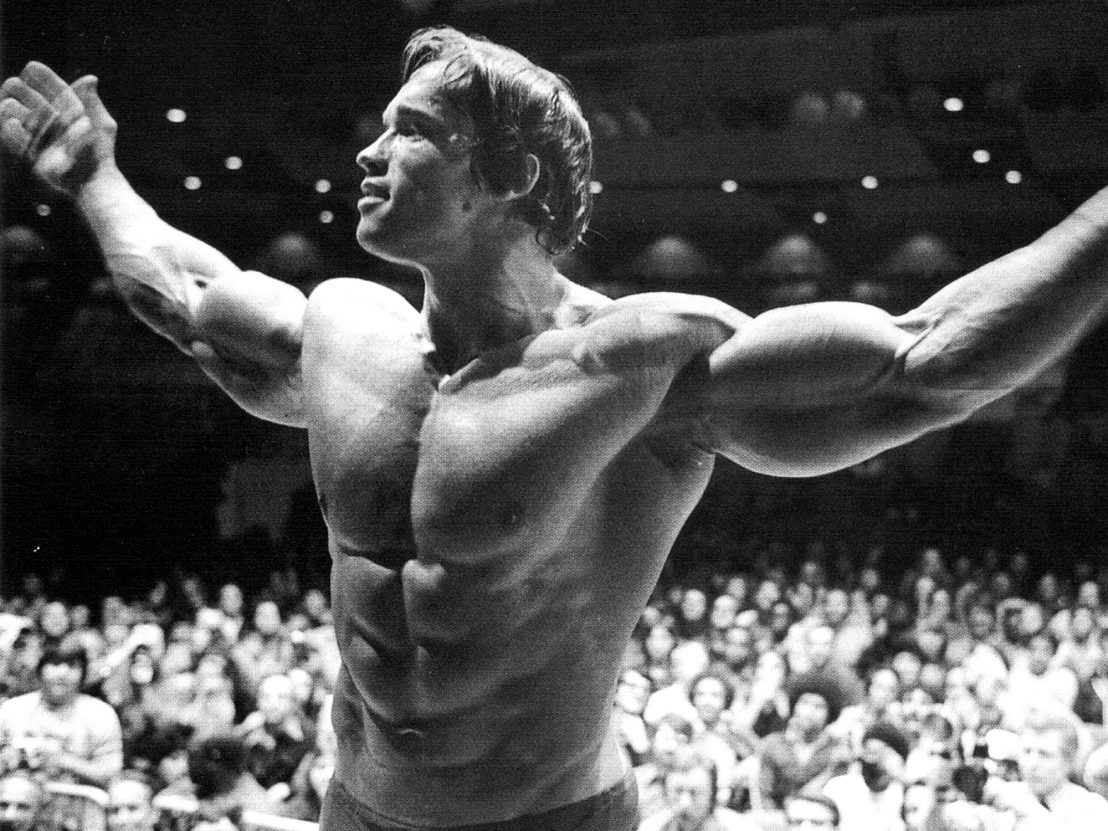
‘Conan’ may have kickstarted Arnie’s Hollywood career, but it was James Cameron’s sci-fi sleeper hit The Terminator, released the following year, that transformed him into an industry player, unlocking the kind of self-aware humour that would become the hallmark of his late-80s action movie run. The fact that Schwarzenegger tried to have the famous line ‘I’ll be back’ altered to ‘I will be back’ following problems with pronunciation is one of those make or break moments that can alter career paths irrevocably. Not only would the line work in his favour, it would become his catchphrase, one that was shoehorned in to several other movies as Arnie conquered the industry picture by picture, gradually usurping commercial adversary Sylvester Stallone as the genre’s main attraction. There’s nothing dryer than having a killer robot reel off popcorn lines in a manner that lacks total self-awareness, and that translated to a then robotic actor. If Conan was inspired casting, focusing on Arnie’s physicality and turning his thick, foreign accent into a positive, then The Terminator took it to the next level. It was the part he was born to play.
[visualising ‘POSSIBLE RESPONSE: YES/NO; OR WHAT?; GO AWAY; PLEASE COME BACK LATER; FUCK YOU, ASSHOLE; FUCK YOU’] Fuck you, asshole.
The Terminator
Without The Terminator and the illusion of variation in terms of performance, Arnie’s career could easily have fizzled out. Hindsight tells us he had all the prerequisites to headline some of the biggest action blockbusters of the 90s, but he could just as easily have been typecast as a swords and sorcery accessory, setting him on the kind of stilted career path that may have committed him to the Hollywood history books as a mere footnote. In any other movie, Arnie’s turn as the now iconic T-800 would have been labelled stiff, unnatural and robotic, but that was precisely the point. It wasn’t as easy as all that. Arnold would work hard to perfect those twitching nuances and, as with everything else he’s set out to achieve during his long and illustrious career, would absorb the valuable experience that came with every production like a sponge, but it was an inspired play nonetheless.
Ironically, Arnie initially read for the part of Kyle Reese, and it took some persuasion from Cameron to convince him that the role of the T-800 was better suited, even if ‘action hero’ was the actor’s ultimate goal. Schwarzenegger was understandably concerned about being cast as an inhuman killer following his swashbuckling turn as Conan, the villainous T-800 a possible stumbling block in his fledgling career. Cameron also had to be cautious. Arnie had already signed on for Conan the Destroyer, set for release early the following summer, so it was something of a risk for the filmmaker to challenge his rising star, particularly after struggling for so long to land his second movie, low-key indie horror Piranha II: The Spawning his only directorial credit.

Piranha II proved a horrible experience for Cameron, who was fired and replaced less than three weeks into production by Italian producer Ovidio Assonitis, who had already fired and replaced original director Miller Drake in his quest for absolute control. It was while jobless in Rome that Cameron came up with the idea that would change his life forever. He’d already cut his teeth as a miniature model maker at Roger Corman Studios, working as production designer on 1981’s Galaxy of Terror before landing special effects duties on John Carpenter’s dystopian classic Escape From New York, so horror and sci-fi were already in his blood. Cameron would cite Carpenter’s low-budget smash Halloween as his most direct source of inspiration, using a fever dream about a knife-wielding metallic torso as a “launching pad” for a film that is very much in the slasher vein. Slashers were cheap, relatively easy to shoot and hugely popular during the early 1980s. If ever there was a clear path to the big time, this was it.
Having dismissed his agent’s concerns about returning to the horror genre, Cameron retreated to the home of science fiction writer Randall Frakes, who would later novelize The Terminator. It was there that he set to work on a first draft, eventually enlisting the help of friend Bill Wisher. The script’s outline was nothing like what would end up on screen. Cameron’s initial idea was to pit two Terminators against one another, the first being similar in construction to the T-800, the second an organism that could transform into liquid metal, but a lack of suitable technology quickly put an end to that concept (for the time being at least). With a budget of approximately $6,000,000, making a credible, high-concept sci-fi movie wasn’t going to be easy. Cameron’s imagination knew no boundaries, but for now he would have to find inspiration elsewhere.
He may not have realised it at the time, but Arnie was Cameron’s true golden ticket. Lance Henriksen, who went on to play Detective Hal Vukovich in the movie, had been the first actor to dress as the T-800, and a wiry, less conspicuous machine may have proven rather interesting when pitted against Schwarzenegger’s musclebound Reece — it certainly worked for Robert Patrick seven years later — but it’s hard to imagine anyone else playing the role that more than any other would come to define Arnie’s incredible mainstream career. Blockbusters such as Total Recall, Commando and Predator have all become cult classics in their own right, the latter spawning a mega-money franchise almost on a par with the Terminator series, but his turn as the T-800 stands head-and-shoulders above the rest — ironic when you consider that Michael Crichton’s Runaway, a kitsch and horribly dated endeavour released around the same time, was the movie pegged for critical and commercial domination while The Terminator was written off as a potential low-budget dud.

In The Terminator, Arnie plays a relentless cyborg assassin sent back in time to kill the unborn leader of a future resistance, a synthetic soldier from a time when Skynet and artificial intelligence have designs on eradicating the human race. When our hulking brute first arrives on the scene he’s very much the archetypal stalk-and-slash killer, terminating a slew of women in a manner which echoed the home invasion killings of ‘Night Stalker’ Richard Ramirez, who terrorized the residents of the Greater Los Angeles area, and later the residents of the San Francisco Bay Area, from June 1984 until August 1985, embarking on random and indiscriminate acts of murder. It was a prickly time for American citizens, who felt powerless as murder lurked uninhibited, law officials struggling to tackle such a vicious and motiveless streak. While the emotionless T-800 is just as indiscriminate in essence, he at least has an objective to complete, and the quickest way to do so is to plough through every Sarah Connor in the phone listings until he finds the one who will have a hand in saving humanity. Those early images of Arnie storming the private abodes of everyday residents and unflinchingly disposing of them are as terrifying as anything the horror genre had to offer. This was a movie that cut close to the bone.
Though technically science fiction, The Terminator is very much a film in the horror vein, its muted palette transforming downtown Los Angeles into a neon nightmare worthy of those grainy ‘video nasties’ of the early 1980s. Similarly, the T-800 is an amoral monster in the purest sense. It can’t be bargained with. It can’t be reasoned with. It doesn’t feel pity or remorse or fear. It has a singular, unflinching objective, and if that objective happens to be you you’re basically fucked. Part of the movie’s appeal is its breathless pacing and the idea that the dispassionate killing machine stalking our protagonists will not stop, EVER, until they are dead. Your typical slasher villain may possess an almost supernatural ability to be in the right place at the right time, but at least they’re human, sharing all the flaws and fallibilities that we do. Not only does the T-800 have an inhuman ability to track its prey, it doesn’t get tired. The longer you run, the harder it gets, but the T-800 never falters. You can shoot it, blow it up, set it on fire, and it’s wretched exoskeleton will still come crawling after you. He may prefer the laser-sighted pistol to the blunt instrument, but the character’s slasher origins are clear.
Come with me if you want to live.
Kyle Reese
The fact that, in its equally terrifying flesh form, the T-800 is indistinguishable from human beings, also gives the character an edge. One of the key ingredients of horror is isolation, and there isn’t a person alive who would believe the story of a killer machine sent back in time to eradicate humankind by eliminating the mother of an unborn leader, particularly when the messenger turns up butt naked and trawls the city streets daubed in vagrants clothing. Even Sarah Conner (Linda Hamilton) is dubious, partly because someone’s been bumping off women who share her name, and partly because she doesn’t want to accept the responsibility of becoming the late 20th century’s answer to Mary Magdalene, but mostly because it’s just a crazy fucking story. Even after the stranger saves her life from what is essentially a mechanical Michael Myers during Cameron’s breathless Tech-Noir showdown, she’d rather seek easy answers from battle-hardened cynics looking to put someone behind bars than face the bluntness of the reality facing her. Once Sarah accepts the truth, she and Kyle are completely and utterly alone, extricated from a society without purpose.

Crucially, they do have each other. Michael Biehn’s Kyle Reese may be on a mission to ensure mankind’s survival, but in a dizzying time travel twist he is also destined to become the father of the child who is ultimately responsible, teaching Sarah the survival tactics she will one day pass on to his future son, a soldier he had once fought alongside (just take a moment to process all that). Aesthetically, Cameron and his crew work miracles, particularly during those nightmarish flashback sequences experienced by Reese, the kind that make the threat of a single Terminator seem like a stroll in the park. Reese may be a stranger to Sarah, but he knows her face better than anyone thanks to a polaroid that comes into existence after Reese is dead, one that he clings to as he fights a future war on a landscape of giant, skull-crushing machines, a time where surviving soldiers scurry across veritable boneyards like rodents in the nuclear dust. It is bleak, disturbing, and not nearly as farfetched a concept as it seemed back in 1984.
Sarah and Kyle’s romance is one of the most memorable of the era, at least in the action and sci-fi genres. It is touching, tragic, but not without purpose, the complete antithesis of the condescending patriarchal relationships that dominated the genre, women generally treated like helpless accessories with no real motivations beyond swooning at the feet of Hollywood’s latest barrel of muscular excess. There’s no fairy tale ending either. Their romance is brief and ill-fated, a whirlwind of distrust, violence and despair, but it’s absolutely vital that events transpire the way they do, something that makes their fleeting union all the more meaningful. Despite the immediacy of their pairing, their impromptu show of passion is years in the making, the act of sex an impassioned release for both parties as the inevitable looms. Reese may be a complete stranger, but Connor is in his blood. He has studied that photograph as if the future of mankind depended on it, clinging to it as if it was life itself. In a future world of poverty, death and disillusion, he has pondered the kind of acute questions that can only lead to devotion, Sarah’s image a flicker of hope in a post-nuclear world too ravaged for tenderness.
At this juncture, it’s hard to imagine that Sarah could give birth to and train the heroic saviour of the human race, but over time she would grow to become one of cinema’s most memorable heroines thanks to an imposed stay in a mental asylum and years of condescension from smug naval gazers too wrapped up in their domesticated realities to entertain such a bleak future vision. When we first meet Sarah, she’s a million miles from the resourceful warrior we find in Terminator 2: Judgment Day. Frizzy, unorganised and armed with little more than a moped, she is wholly unprepared for the apocalyptic struggles she will one day face, breezing through a life without purpose beyond nine-to-five servility and the wilting prospect of a meaningful romance, but a one-on-one showdown with a T-800 will change that in a hurry.
The T-800’s pursuit is absolutely breathless and utterly terrifying, a relentless siege of coldblooded violence delivered at a breakneck pace that puts you right in our heroine’s shoes. There’s hardly a moment when you’re able to let your guard down. A fair amount of credit has to go to Brad Fiedel’s head scrambling dystopian score, a churning industrial factory that wades through twisted metal for brief respites of battle-hardened hope, forging a technological hell that Arnie’s monster singularly personifies. The T-800 exoskeleton, which Cameron had a hand in designing, was also a breath of fresh air aesthetically, a purely wicked creation that proved the sobering antithesis to the gaudy, mechanical monsters of yore. The stop-motion effects during those final scenes may seem a little dated to modern audiences, but there’s something uniquely disquieting about the T-800’s final pursuit. Those glowing red eyes and harsh skeletal head are malevolence distilled, but even more terrifying is Arnie himself.
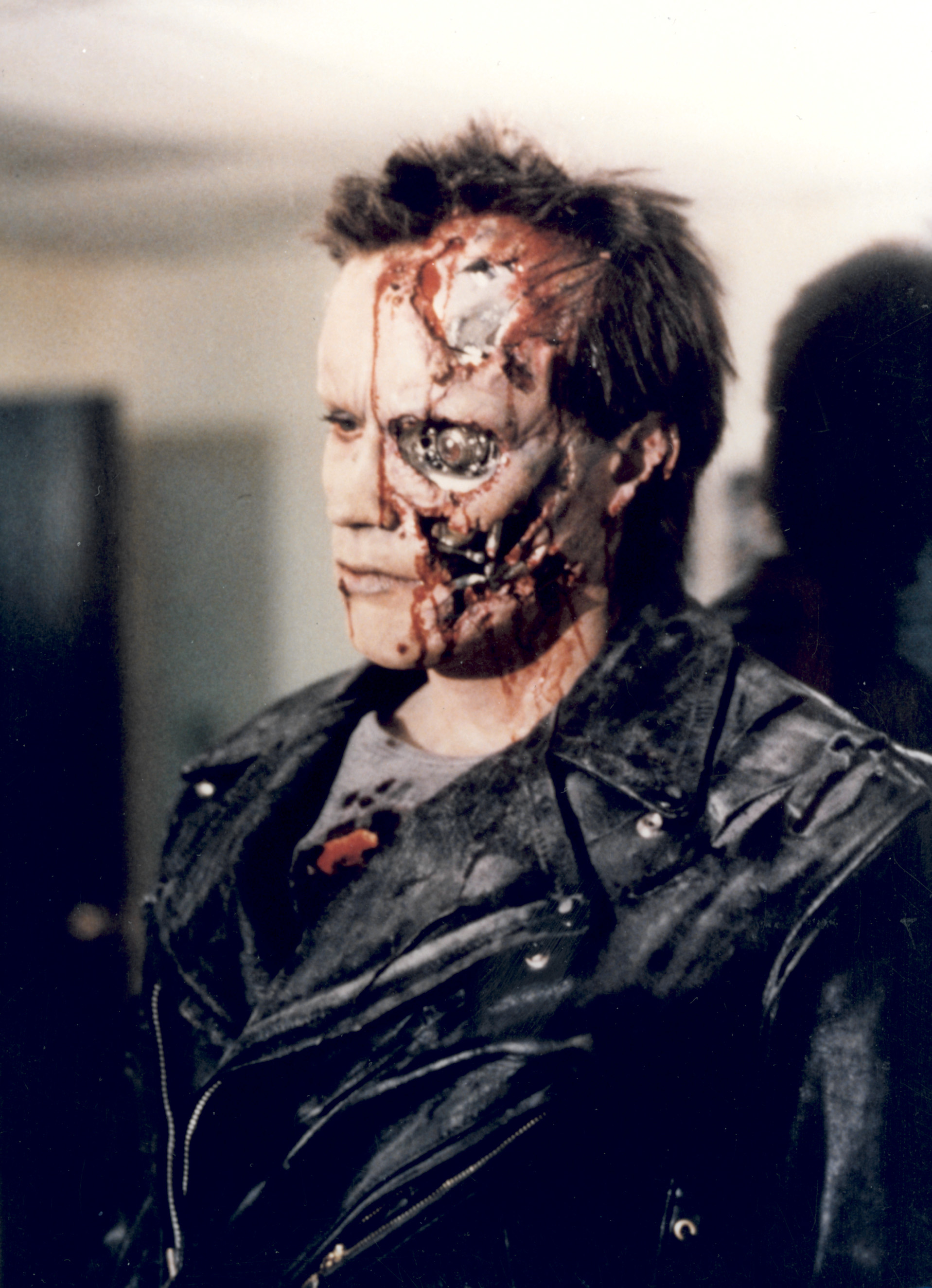
The fact that the T-800’s human façade is in some ways more intimidating than the demonic endoskeleton buried beneath is testament to Schwarzenegger’s physical magnitude, his potential for life-crushing brutality bringing an almost futile aura to proceedings. This is particularly true when the machine’s outer layer is wounded and begins to decay. At this point the character grows more frightening with each passing scene, a gradual reveal keeping us fascinated throughout. First it loses its eyebrows to fire, a visual that completely dehumanizes the actor. Then it’s forced to tear its own eye out in a gruesome scene that lends our villain a queer and disquieting sense of intimacy. By the time we arrive at the film’s spectacular highway chase, the Terminator is more machine than man, its crude endoskeleton protruding like metallic bone. Fittingly, and somewhat ironically, it’s from Arnie’s ungodly appearance that much of the movie’s humour is derived, almost all of it hinging on the actor’s awe-inducing physicality. When the machine marauds its way past a fellow resident of a dingy, lowdown hotel, the guy is absolutely gobsmacked, letting out a truly convincing and wholly relatable “daaaayyyyyuuum!” When it later demands that a trucker “GET OUT!” of his vehicle, the guy emphatically obliges, and who could blame him? Visual touches like the T-800’s torn flesh and roving mechanical eyeball are truly the stuff of nightmares.
The most devastating and controversial of all the film’s scenes, the one that displays the T-800 at its remorseless, unflinching best, has to be the infamous police station massacre. Police custody usually means a temporary halt to the danger, a moment’s respite for the watching audience, but we soon find out that patience and programmed killers don’t mix. It was also a reflection of LA law enforcement’s inability to defend its citizens against real-life home invaders like Ramirez, tapping into very real fears at a time when DNA techniques were still in their infancy and citywide surveillance wasn’t as widespread. In an era when moral outrage was at its most sensitive and volatile, onscreen violence embracing levels never before imagined, the sight of the myopic and irrepressible Terminator wiping out an entire precinct like a one-man Armageddon was shocking to say the least. This was arguably the most ruthless killing spree from a horror character ever committed to celluloid, one that gave birth to the iconic line that almost never was.
You’re terminated, fucker.
Sarah Connor
The most affecting element of the police station scene is the absolute narrative chaos it creates. Law enforcement was generally out of bounds back then. Cops would fall, but they usually went out with a sense of nobility and were always suitably avenged. The T-800 picks off the members of this particular precinct with a dead-eyed insouciance that is borderline-nihilistic. Many of his victims are faceless extras, but our two lead investigators are disposed of with equal glibness, making the thin blue line positively anorexic. The scene does for The Terminator what Marion Crane’s premature death did for Hitchcock’s Psycho. It smashes convention, opening us up to endless uncertainty, emotions that are the very basis for fear. Arnie may have been a rank amateur at this stage of his career, but could any living actor have pulled off that scene in the manner that he did? It is formidable, iconic, utterly terrifying, a star-making turn of the highest order.
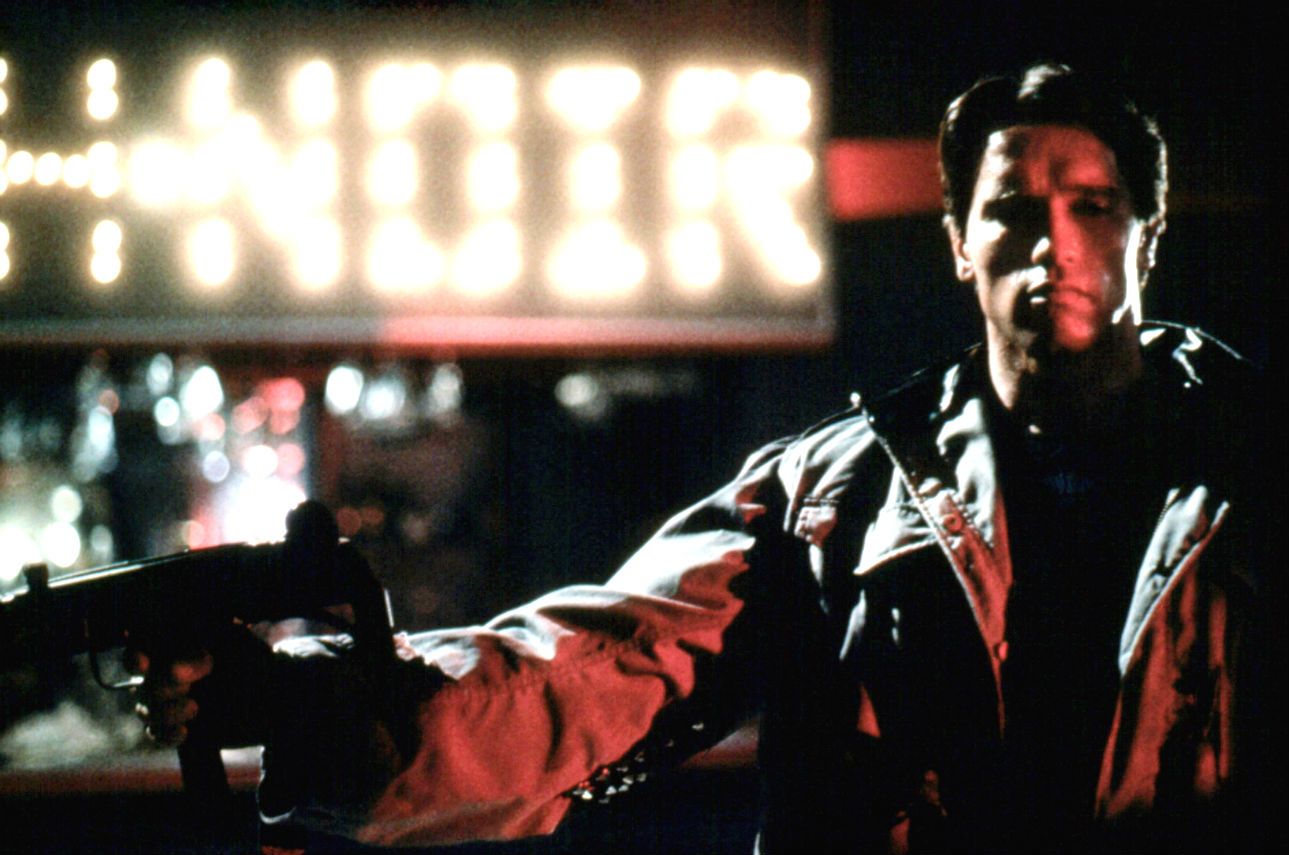
As potent as that scene is, my personal favourite has to be the equally iconic Tech Noir scene, a masterclass in dramatic tension that best displays Cameron’s burgeoning talents. It’s a momentous scene in terms of development, revealing both the gravity of Sarah’s predicament and the true intentions of the still mysterious Kyle Reese. It also reveals the true capacities of our marquee monster. We’ve already seen the extent of the T-800’s strength and brutality, and thanks to a brief but memorable scene between Arnie and unfortunate pawn store clerk, Dick Miller, his ruthlessness and complete lack of empathy, but when he emerges from a barrage of gunfire with hardly a scratch to show for it, we quickly realise that this is no ordinary threat. What we’re dealing with is one of the most fearsome, indomitable figures in all of cinema. Emotionally, there’s nowhere to hide.
The Terminator would go on to forge what many consider to be the greatest sequel ever made. Thanks to a deft slight of hand that saw Arnie cast as a reprogrammed T-800, one sent to protect Sarah and her now teenage son from an even bigger threat in Robert Patrick’s nefarious “mimetic polyalloy” T-1000, the film was able to stand as a masterpiece in its own right, emphasising action and humour over straight-up horror while retaining a genuine fear factor. In some ways, Terminator 2: Judgment Day is richer, particularly when it focuses on the unlikely father/son relationship of the T-800 and Edward Furlong’s similarly unprepared John Connor, the former learning to understand our mistakes in order to prevent them. By that stage in his career, Arnie had an incredible 18 movies under his belt, working with some of the biggest stars in the industry. Typically, he’d learned a thing of two on his journey. His acting had improved tenfold, his inimitable brand of comedy something of a fine art.
Terminator 2 was a truly inspired sequel; arguably the most cherished action movie experience of my young life, one that only gets better with age. Its predecessor is a very different animal, a bleak, dystopian nightmare which triumphs as an exercise in visceral terror; a science fiction story that somehow manages to put the majority of horror movies to shame. It doesn’t fool around with tedious exposition or weigh us down with intolerable chunks of backstory. It throws us into direct traffic, delights in our breathlessness as two opposing forces careen towards a fated and potentially fateful destination. As an exercise in thrills and spills terror, it is pure brilliance, a fiendishly simple concept flawlessly executed. It’s also an important movie, one that forged superstars and shaped careers, leaving an indelible mark on modern sci-fi cinema that continues to inspire to this very day. For audiences, it remains a spellbinding explosion of pure entertainment, one dipped in the speculative nuances of a very possible reality, and you know you’ll be back, time and time again, repeating history, with one roving eye on a Terminator-shaped future.
Director: James Cameron
Screenplay: James Cameron & Gale Anne Hurd
Music: Brad Fiedel
Cinematography: Adam Greenberg
Editors: Mark Goldblatt





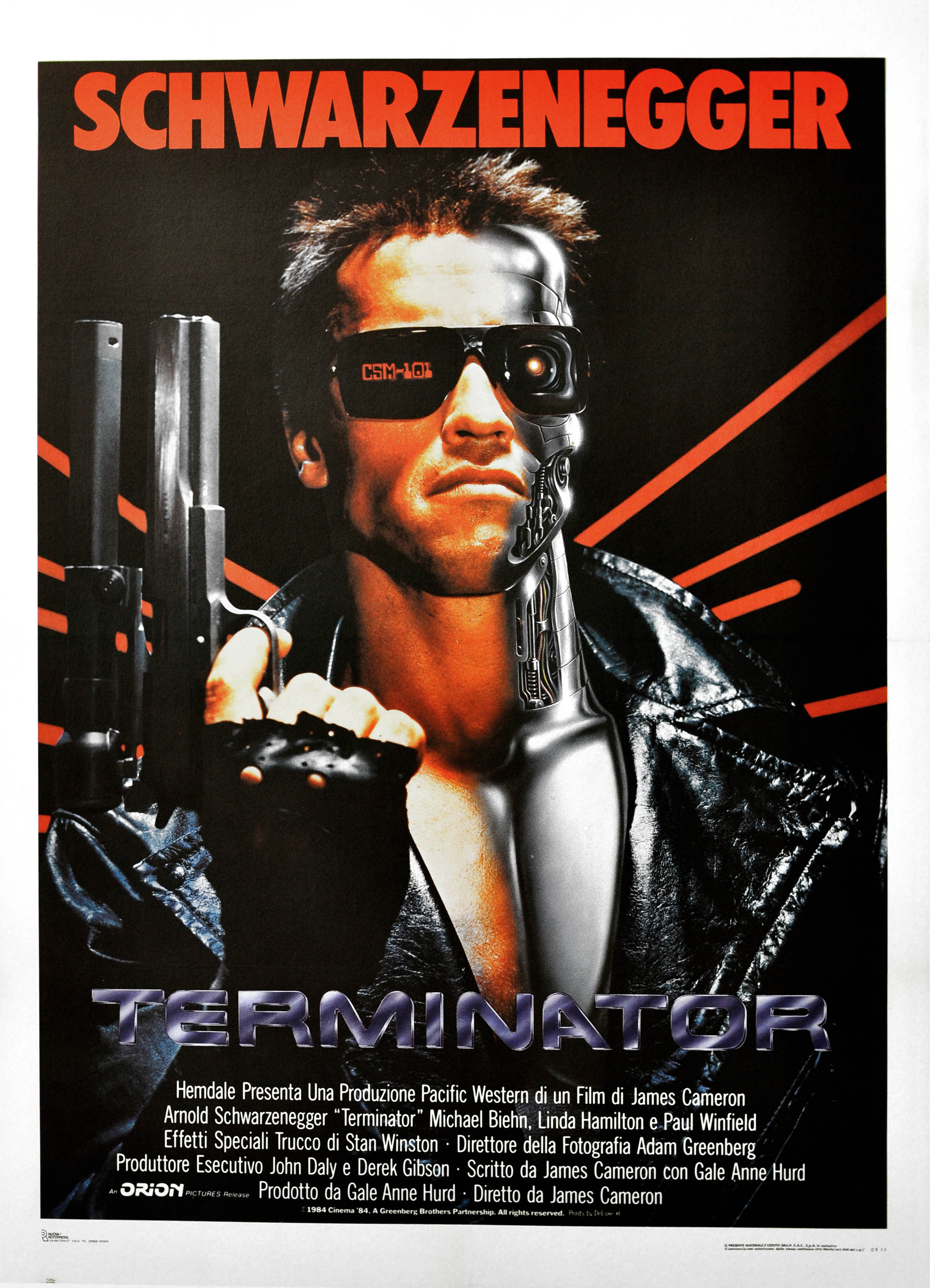
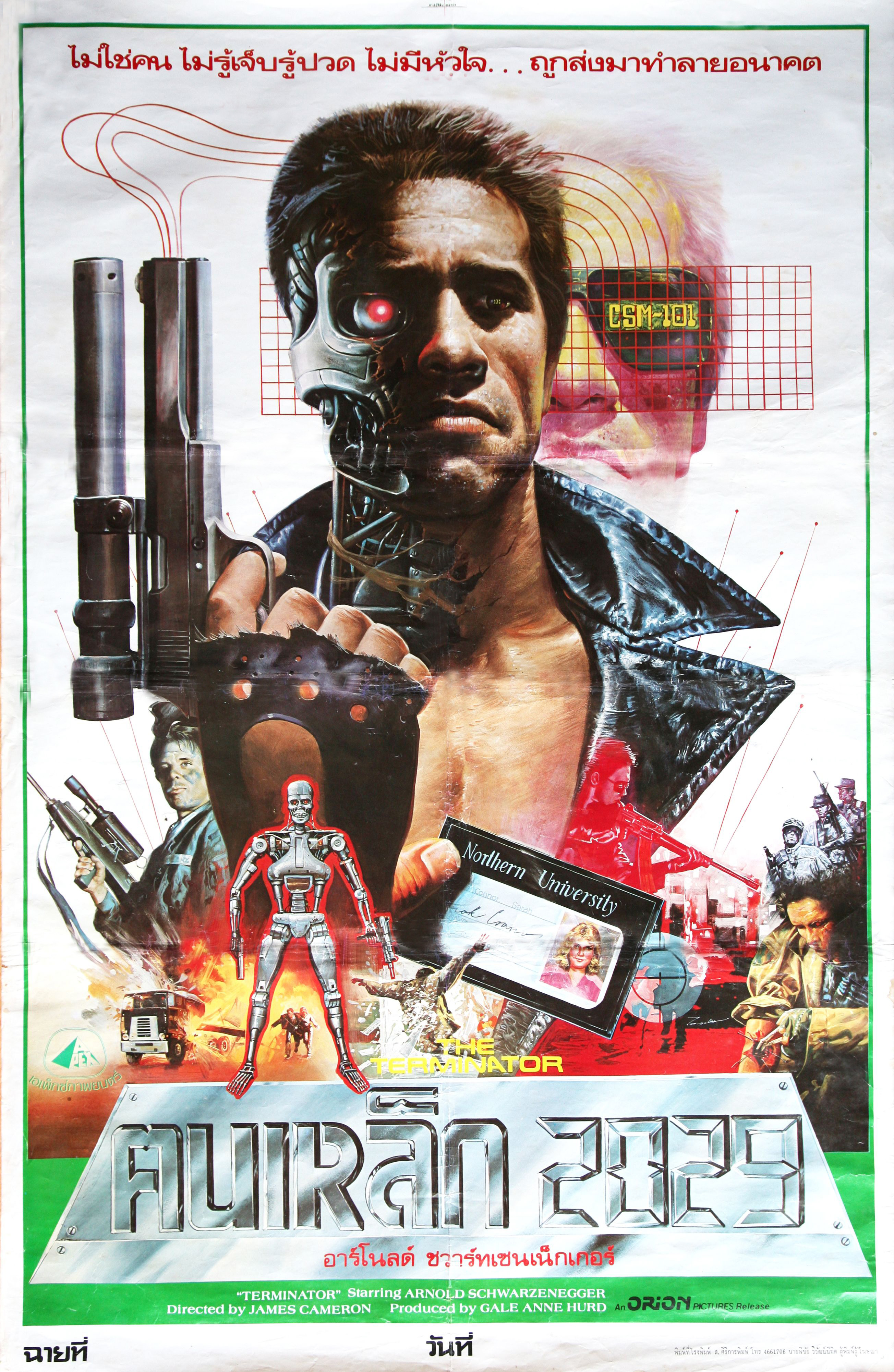

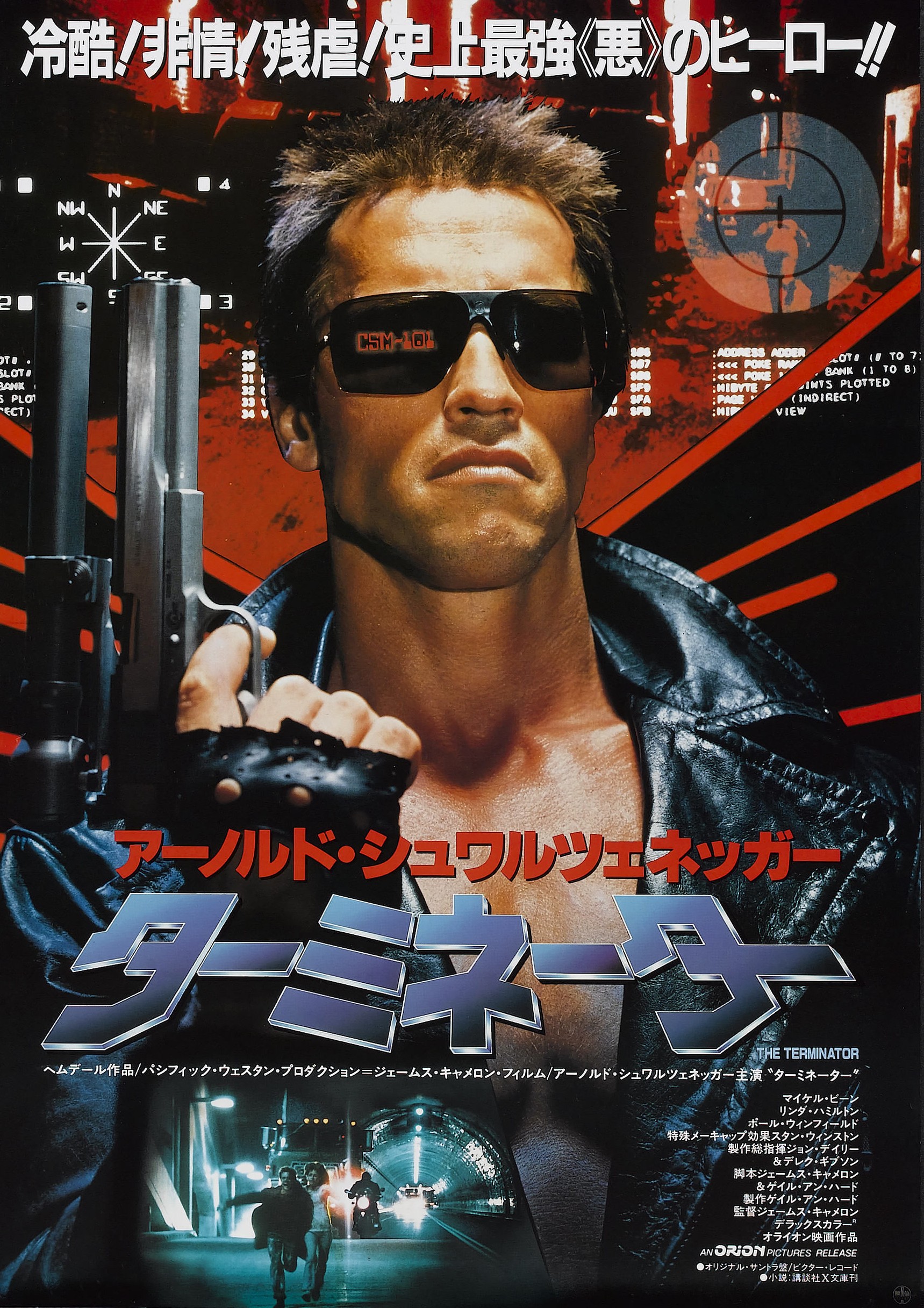




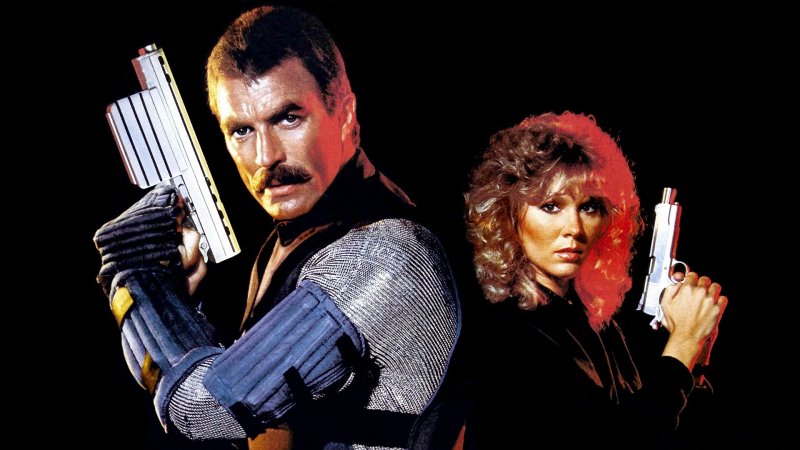





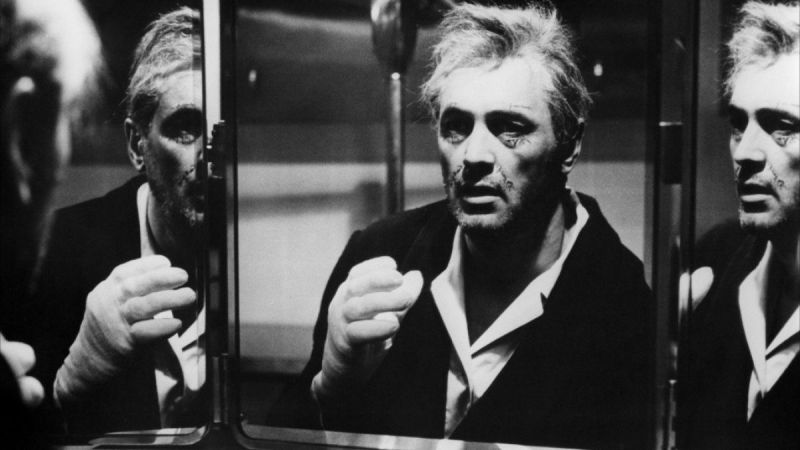

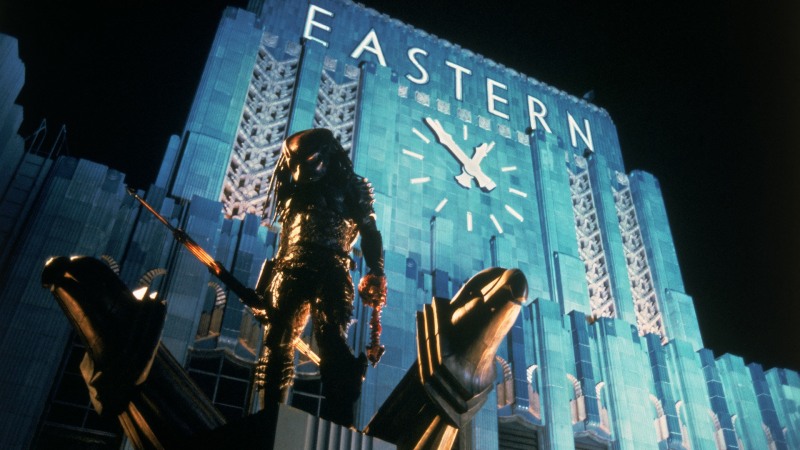

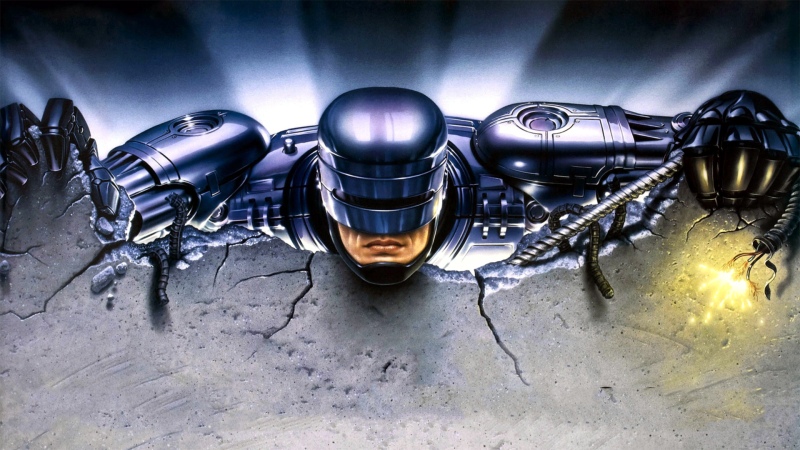

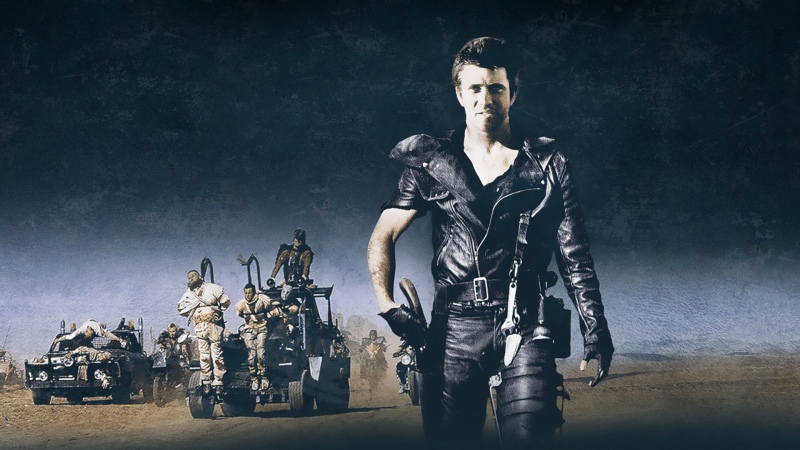

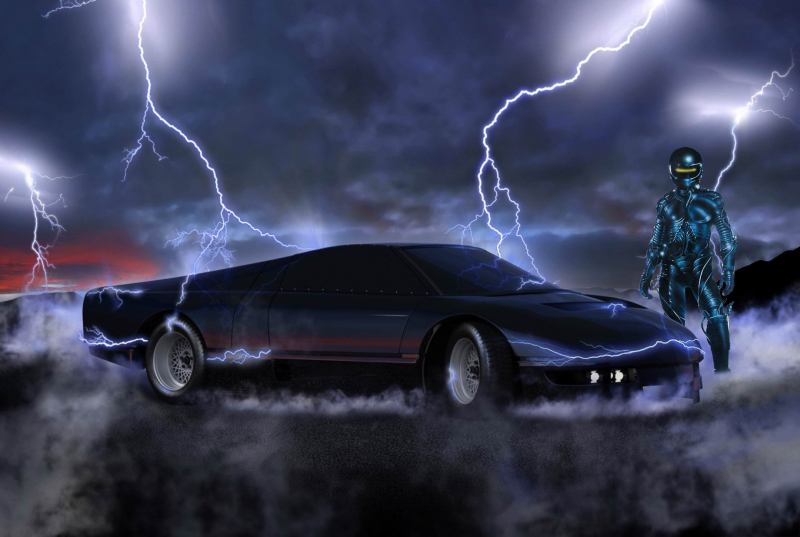


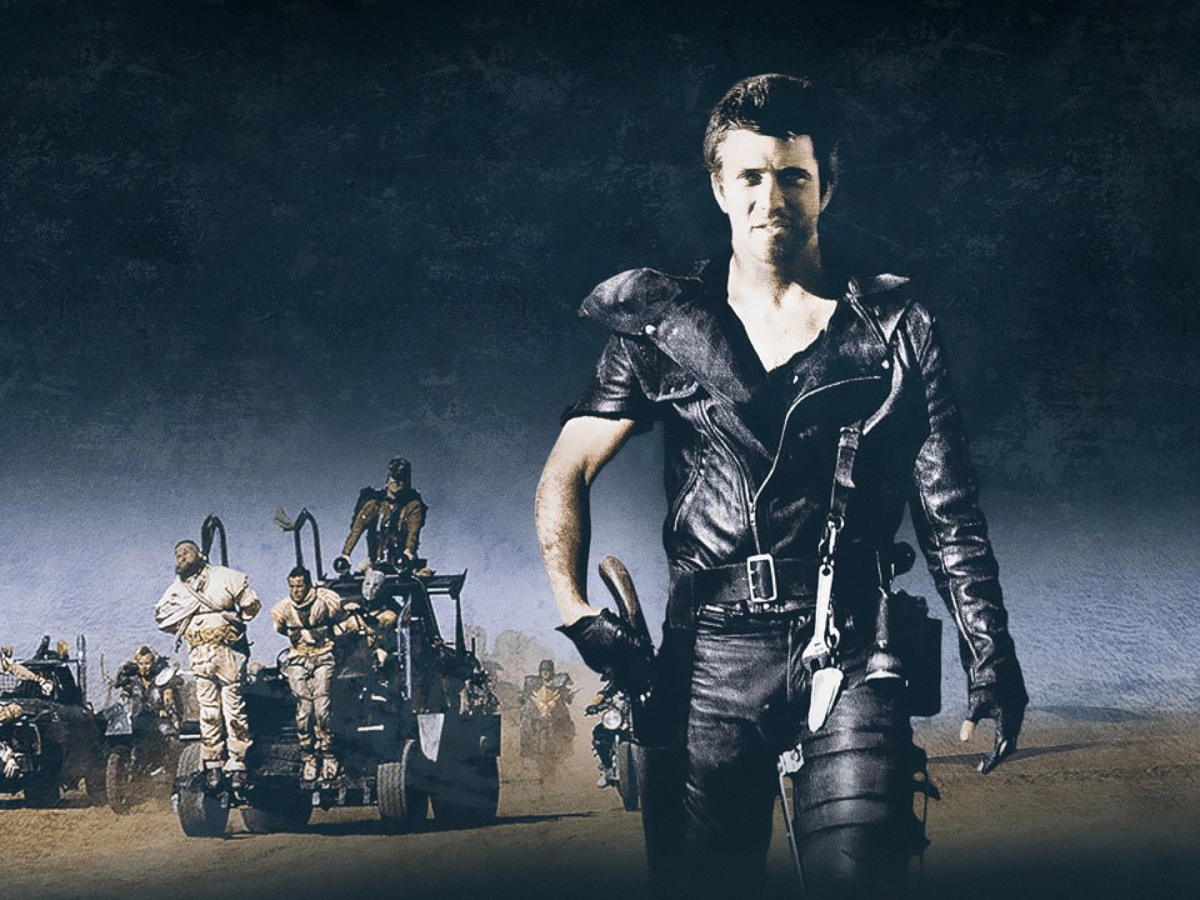

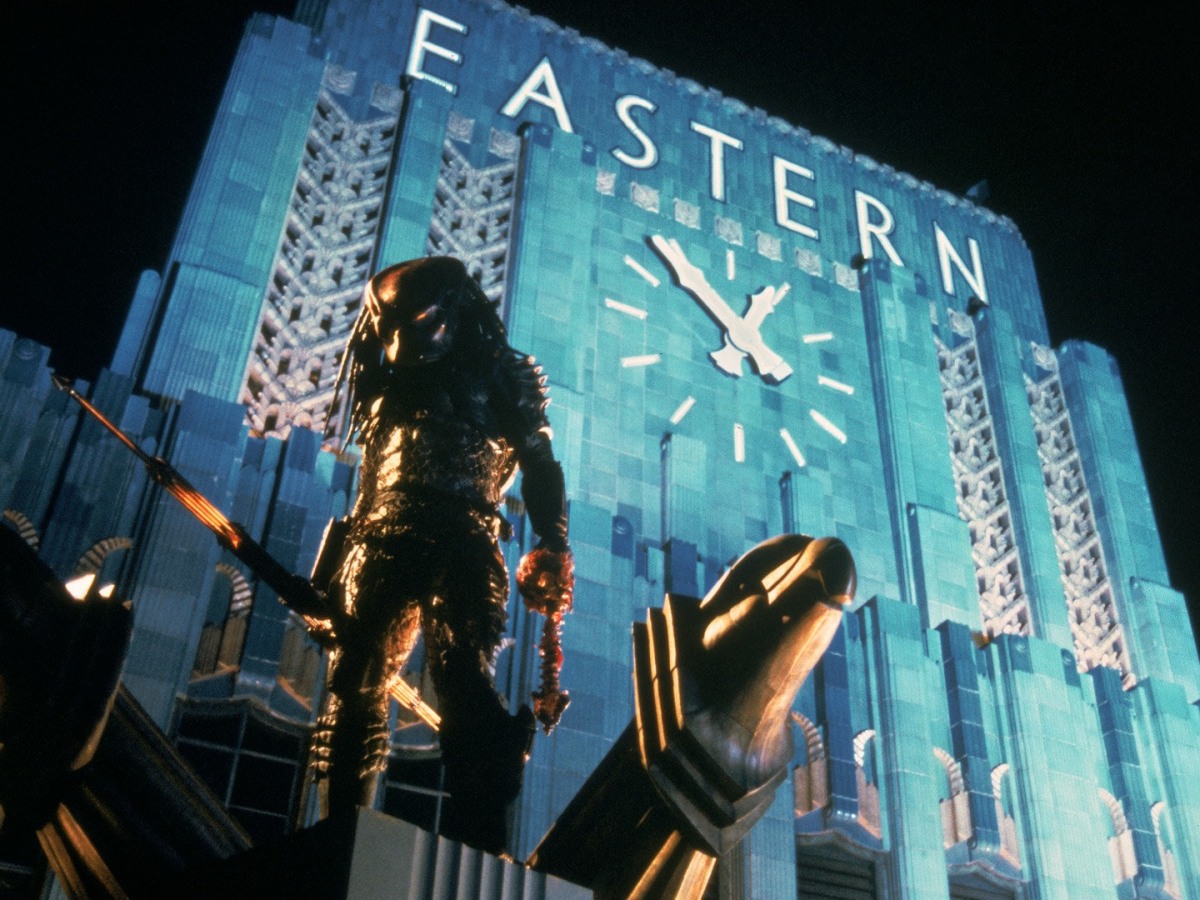


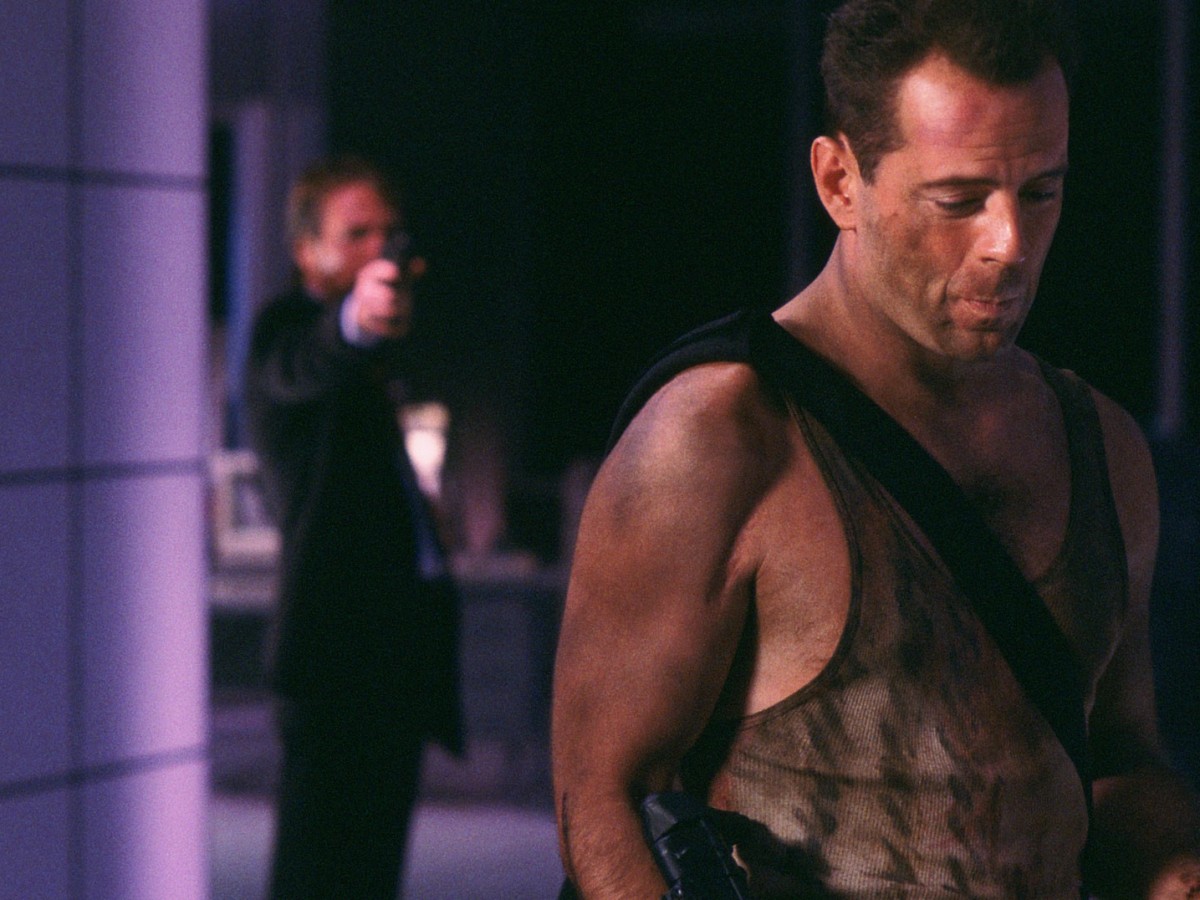



The original Terminator movie is still the best of the franchise. It has a superb story, great cast, and Cameron was firing on all cylinders with this one. Its just a brilliantly made movie. I watched it again recently and it still has you on the edge of your seat, especially the final where the Terminator endoskeleton is crawling after Sarah. I like T2 as well, but its more a showcase of action set pieces, were the original is packed with far more suspense.
LikeLike
Hi, Paul.
I think I’d have to agree with you. I am partial to horror, which gives the original an obvious advantage in my mind, and though T2 is just as enjoyable as an action vehicle and pretty much flawless, the T-800 is far more suited to horror. Arnie was genuinely terrifying.
LikeLiked by 1 person
Yes, T2 was totally stunning, but it didn’t have the same horror element as the original Terminator film. Arnie’s brilliant performance in the firs movie made the t-800 utterly frightening. The pace of the story is superb as well and I think the effects, especially when the endoskeleton rises from the flames before the final showdown is one of horrors most iconic images.
LikeLike